#Dungeons & Dragons monsters
Text
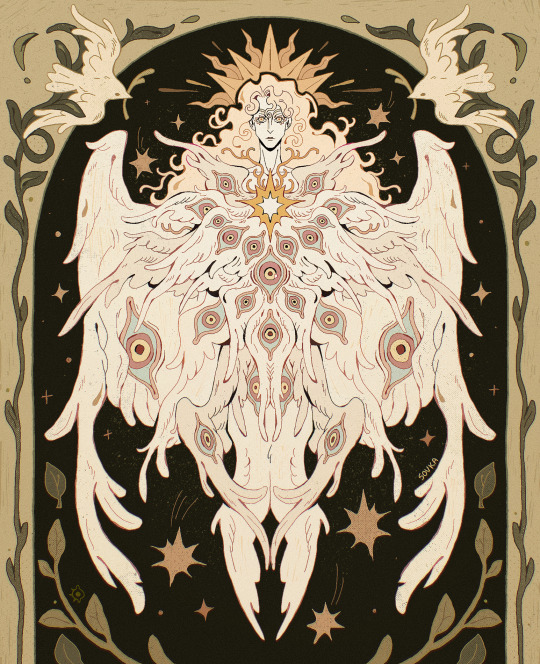
Fallen from the sky with grace ✷
#illustration#the abbot#cos#curse of strahd#curse of strahd spoilers#fantasy#artists on tumblr#monster#angel#creature#art#dnd#dnd5e#dnd art#dungeons and dragons#headcanon
25K notes
·
View notes
Text

Umm... A little help?
#artists on tumblr#oc#monster#monstergirl#digital art#art#own character#slime girl#slime#dnd#dungeons and dragons#dnd stuff#sword
8K notes
·
View notes
Photo

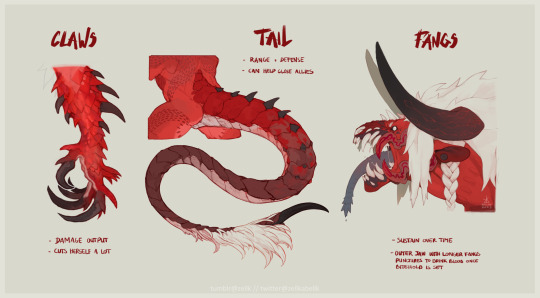
Some more drawings on my babygirl Qalaari in DnD !
#qalaari#qalaa#qalaari croquelune#minotaur#dnd#dungeons and dragons#d&d#barbarian#path of the beast#barbarian path of the beast#beast barbarian#monster#zellk#beary art
9K notes
·
View notes
Text
Monster obsessed elf mage Shen Qingqiu has managed to find himself an ogre (??????) househusband who just so happens to know everything about cooking monsters in the dungeons ☺️ (scum villain dungeon meshi au!)

#for reference binghe is not an ogre actually (or maybe hes half if you want him to be ) but some kind of dungeon monster#i was kind of thinking manticore while drawing him but then i rembered manticores dont look like that#maybe dragon perhaps. whatever the public decides sxy was up for bangin#svsss#scumbag self saving system#scum villain's self saving system#shen qingqiu#sqq#bingqiu#luo binghe#lbh#my art#sv dungeon meshi au
1K notes
·
View notes
Photo

The Sea Goat’s Treasure....

Our dnd campaign’s somewhat (not really lmao) encounter.
10K notes
·
View notes
Text

Owlbear, but it's a variant that mysteriously happens to look just like it's part pigeon
-2626
#art#traditional art#sketch#daily sketch#ballpointsketch#digital colouring#digital colour#ballpointpen#fantasy art#fantasy creature#owlbear#pigeonbear#pigeon#feral pigeon#dove#rock dove#columbidae#dungeons and dragons#d&d#d&d art#d&d monster#dnd#dnd art#dnd monster#columbidae creature
1K notes
·
View notes
Text


A being born from the fey and the storm incarnated, bound to a cold iron tree for a century as punishment, now free once again- Willing to make up for the time lost.
Say hello to the new character in town! Its name is Borrasca (it/any) and they've been quite fun to design. It's an air elemental/eladrin, with some ghostly vibe because being sapped for your life juice for 100 years kinda does that to you. Borrasca is tricky and mischievous, and will absolutely haunt you enemies for a churro
#dnd#dungeons and dragons#pathfinder#eladrin#elf#fantasy art#genasi#air genasi#ghost#undead#character design#sygdomthings#syg2024#character art#original character#monster#terato#faerie#fae#sorcerer
708 notes
·
View notes
Text



Gooze – Small ooze, chaotic evil
…and thus, a new horror was unleashed onto Falbheim’s already more than hazardous substructures. Tisdor Dwindleteeth III’s joy was immeasurable when he finally managed to merge magically condensed consciousness with one of his many specimen of ooze. Of course, even the slightest bit of joy for the infamous necromancer meant trouble for everyone else – great trouble to be precise. After a short period of pondering, the gooze – as this monstrous abomination was later named – instantly assumed the most destructive shape it was able to imagine…just to wreak havoc wherever it waddles.
🔮 If you like my work, kindly consider to support me on Patreon to gain access to monster pages, tokens & artwork of 200+ of quirky creatures, items and potions. Plus, I released my first Foundry VTT modules – 70 creatures, 5 huge ones and 20 potions are done already, many more are in the making!
#dnd5e#5e#dnd#dungeons and dragons#dnd monster#dnd creature#digital art#dungeons and drawings#dnd homebrew#worldbuilding#dnd community#dnd campaign#digital illustration#digital painting#ciritcal role#ttrpg#monster art#fantasy art#artists on tumblr
2K notes
·
View notes
Text
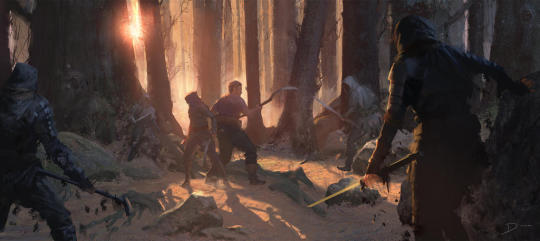
Monsters Reimagined: Bandits
As a game of heroic fantasy that centers so primarily on combat, D&D is more often than not a game about righteous violence, which is why I spend so much time thinking about the targets of that violence. Every piece of media made by humans is a thing created from conscious or unconscious design, it’s saying something whether or not its creators intended it to do so.
Tolkien made his characters peaceloving and pastoral, and coded his embodiment of evil as powerhungry, warlike, and industrial. When d&d directly cribbed from Tolkien's work it purposely changed those enemies to be primitive tribespeople who were resentful of the riches the “civilized” races possessed. Was this intentional? None can say, but as a text d&d says something decidedly different than Tolkien.
That's why today I want to talk about bandits, the historical concept of being an “outlaw”, and how media uses crime to “un-person” certain classes of people in order to give heroes a target to beat up.
Tldr: despite presenting bandits as a generic threat, most d&d scenarios never go into detail about what causes bandits to exist, merely presuming the existence of outlaws up to no good that the heroes should feel no qualms about slaughtering. If your story is going to stand up to the scrutiny of your players however, you need to be aware of WHY these individuals have been driven to banditry, rather than defaulting to “they broke the law so they deserve what’s coming to them.”
I got to thinking about writing this post when playing a modded version of fallout 4, an npc offhndedly mentioned to me that raiders (the postapoc bandit rebrand) were too lazy to do any farming and it was good that I’d offed them by the dozens so that they wouldn’t make trouble for those that did.
That gave me pause, fallout takes place in an irradiated wasteland where folks struggle to survive but this mod was specifically about rebuilding infrastructure like farms and ensuring people had enough to get by. Lack of resources to go around was a specific justification for why raiders existed in the first place, but as the setting became more arable the mod-author had to create an excuse why the bandit’s didn’t give up their violent ways and start a nice little coop, settling on them being inherently lazy , dumb, and psychopathic.
This is exactly how d&d has historically painted most of its “monstrous humanoid” enemies. Because the game is ostensibly about combat the authors need to give you reasons why a peaceful solution is impossible, why the orcs, goblins, gnolls (and yes, bandits), can’t just integrate with the local town or find a nice stretch of wilderness to build their own settlement on and manage in accordance with their needs. They go so far in this justification that they end up (accidently or not) recreating a lot of IRL arguments for persecution and genocide.
Bandits are interesting because much like cultists, it’s a descriptor that’s used to unperson groups of characters who would traditionally be inside the “not ontologically evil” bubble that’s applied to d&d’s protagonists. Break the law or worship the wrong god says d&d and you’re just as worth killing as the mindless minions of darkness, your only purpose to serve as a target of the protagonist’s righteous violence.
The way we get around this self-justification pitfall and get back to our cool fantasy action game is to relentlessly question authority, not only inside the game but the authors too. We have to interrogate anyone who'd show us evil and direct our outrage a certain way because if we don't we end up with crusades, pogroms, and Qanon.
With that ethical pill out of the way, I thought I’d dive into a listing of different historical groups that we might call “Bandits” at one time or another and what worldbuilding conceits their existence necessitates.
Brigands: By and large the most common sort of “bandit” you’re going to see are former soldiers left over from wars, often with a social gap between them and the people they’re raiding that prevents reintegration ( IE: They’re from a foreign land and can’t speak the local tongue, their side lost and now they’re considered outlaws, they’re mercenaries who have been stiffed on their contract). Justifying why brigands are out brigading is as easy as asking yourself “What were the most recent conflicts in this region and who was fighting them?”. There’s also something to say about how a life of trauma and violence can be hard to leave even after the battle is over, which is why you historically tend to see lots of gangs and paramilitary groups pop up in the wake of conflict.
Raiders: fundamentally the thing that has caused cultures to raid eachother since the dawn of time is sacristy. When the threat of starvation looms it’s far easier to justify potentially throwing your life away if it means securing enough food to last you and those close to you through the next year/season/day. Raider cultures develop in biomes that don’t support steady agriculture, or in times where famine, war, climate change, or disease make the harvests unreliable. They tend to target neighboring cultures that DO have reliable harvests which is why you frequently see raiders emerging from “the barbaric frontier” to raid “civilization” that just so happens to occupy the space of a reliably fertile river valley. When thinking about including raiders in your story, consider what environmental forces have caused this most recent and previous raids, as well as consider how frequent raiding has shaped the targeted society. Frequent attacks by raiders is how we get walled palaces and warrior classes after all, so this shit is important.
Slavers: Just like raiding, most cultures have engaged in slavery at one point or another, which is a matter I get into here. While raiders taking captives is not uncommon, actively attacking people for slaves is something that starts occurring once you have a built up slave market, necessitating the existence of at least one or more hierarchical societies that need more disposable workers than then their lower class is capable of providing. The roman legion and its constant campaigns was the apparatus by which the imperium fed its insatiable need for cheap slave labor. Subsistence raiders generally don’t take slaves en masse unless they know somewhere to sell them, because if you’re having trouble feeding your own people you’re not going to capture more ( this is what d&d gets wrong about monstrous humanoids most of the time).
Tax Farmers: special mention to this underused classic, where gangs of toughs would bid to see who could collect money for government officials, and then proceed to ransack the realm looking to squeeze as much money out of the people as possible. This tends to happen in areas where the state apparatus is stretched too thin or is too lighthanded to have established enduring means of funding. Tax farmers are a great one-two punch for campaigns where you want your party to be set up against a corrupt authority: our heroes defeat the marauding bandits and then oh-no, turns out they were not only sanctioned by the government but backed by an influential political figure who you’ve just punched in the coinpurse. If tax farming exists it means the government is strong enough to need a yearly budget but not so established (at least in the local region) that it’s developed a reliably peaceful method of maintaining it.
Robber Baron: Though the term is now synonymous with ruthless industrialists, it originated from the practice of shortmidned petty gentry (barons and knights and counts and the like) going out to extort and even rob THEIR OWN LANDS out of a desire for personal enrichment/boredom. Schemes can range from using their troops to shake down those who pass through their domain to outright murdering their own peasants for sport because you haven’t gotten to fight in a war for a while. Just as any greed or violence minded noble can be a robber baron so it doesn’t take that much of a storytelling leap but I encourage you to channel all your landlord hate into this one.
Rebels: More than just simple outlaws, rebels have a particular cause they’re a part of (just or otherwise) that puts them at odds with the reigning authority. They could violently support a disfavoured political faction, be acting out against a law they think is unjust, or hoping to break away from the authority entirely. Though attacks against those figures of authority are to be expected, it’s all too common for rebels to go onto praying on common folk for the sake of the cause. To make a group of rebels worth having in your campaign pinpoint an issue that two groups of people with their own distinct interests could disagree on, and then ratchet up the tension. Rebels have to be able to beleive in a cause, so they have to have an argument that supports them.
Remnants: Like a hybrid of brigands, rebels, and taxfarmers, Remnants represent a previously legitimate system of authority that has since been replaced but not yet fully disappeared. This can happen either because the local authority has been replaced by something new (feudal nobles left out after a monarchy toppling revolution) or because it has faded entirely ( Colonial forces of an empire left to their own devices after the empire collapses). Remnants often sat at the top of social structures that had endured for generations and so still hold onto the ghost of power ( and the violence it can command) and the traditions that support it. Think about big changes that have happened in your world of late, are the remnants looking to overturn it? Win new privilege for themselves? Go overlooked by their new overlords?
Art
#monsters reimagined#bandits#dnd#dungeons and dragons#d&d#ttprg#pathfinder#heavy topics#monsters reimagined
1K notes
·
View notes
Text

Falin
#dungeon meshi#delicious in dungeon#falin touden#spoilers#my art#fanart#digital illustration#procreate#digital art#my artwork#faligon#fantasy#dragon#monster
455 notes
·
View notes
Text
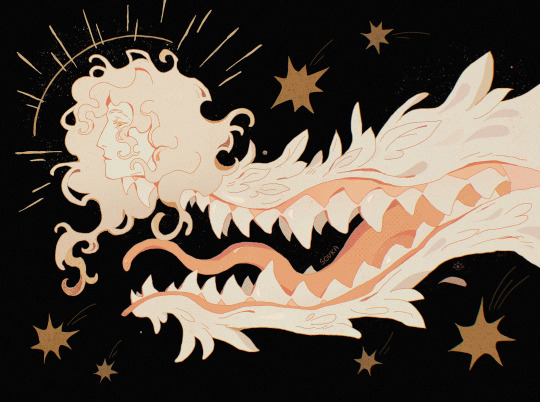
✶ ✷ ✶
#illustration#the abbot#cos#curse of strahd#curse of strahd spoilers#fantasy#artists on tumblr#monster#angel#creature#dnd#dnd5e#dnd art#dungeons and dragons#headcanon
8K notes
·
View notes
Text
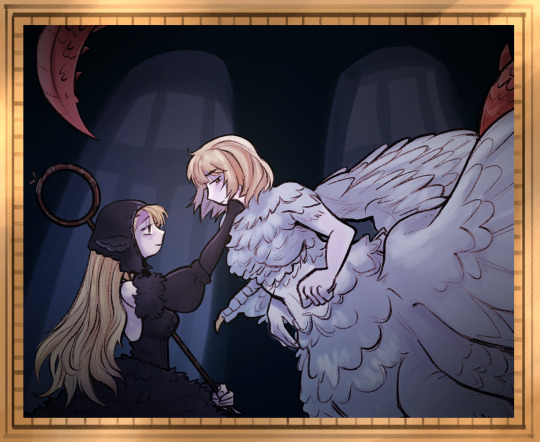
"Innocence died screaming, Honey ask me, I should know. I slithered here from Eden; Just to sit outside your door"
-From Eden, Hozier
aka: au where they grow old in the dungeon together in their monster forms.
#my art#fanart#strawberridraws#dungeon meshi#delicious in dungeon#farcille#marcille donato#farlyn thorden#fallin tourden#fallin touden#guys what is her name the anime / manga got me confused lmao#anyways#had fun with this piece!#I always stress-make fan art during my finals/important times oop#got a super important bfa portfolio due in like three days yipeee#wish me luck#OH YEAH about the “au” lol#basically what if marcille realized that keeping fallin in her monster form would make her have the same life span as a dragon/her#so she like. steals her and they hide away#and for some reason laois gives up#(he would never but this is my special lesbian angst au so shh)#so then they just rot in the dungeon together with dungeon master marcille and monster fallin hehe#I love gay people !!!!!
474 notes
·
View notes
Text
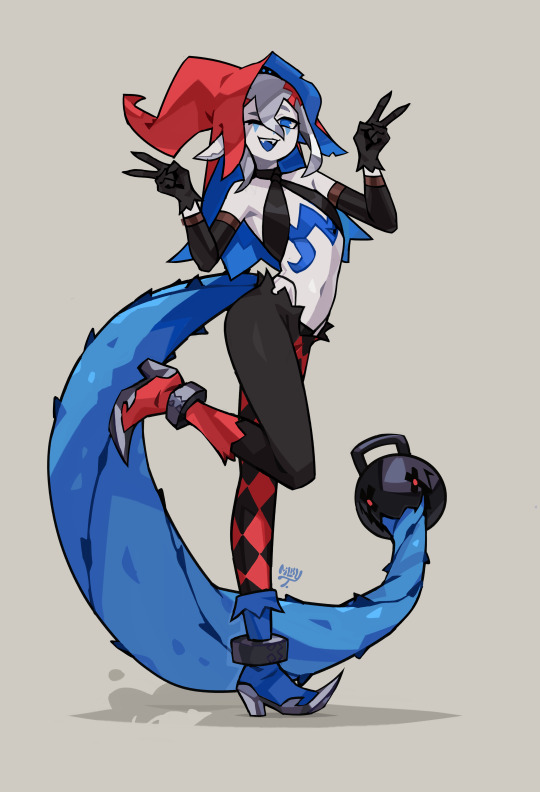
Mimi moment
#artists on tumblr#oc#monster#monstergirl#digital art#art#own character#digital illustration#dnd#dungeons and dragons
2K notes
·
View notes
Text

The dreaded owlbear, king of the northern forests.
512 notes
·
View notes
Text

At the end of a long rest, a character regains all lost hit points.
Find out where those lost hit points went, check out Monsters & Mysteries.
406 notes
·
View notes
Text
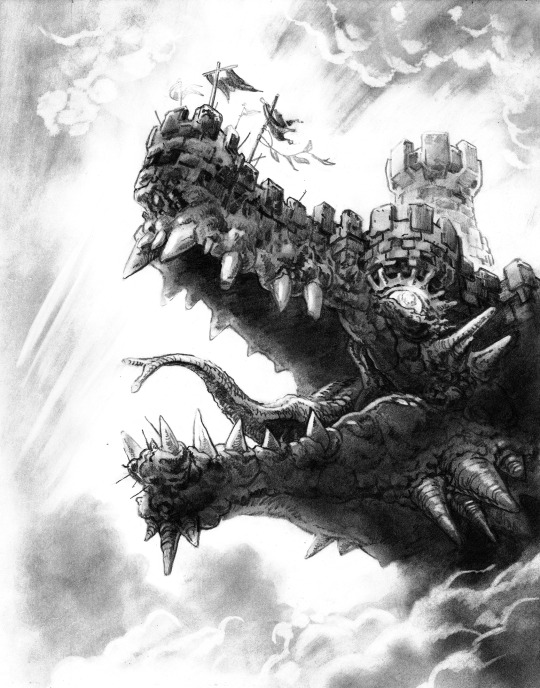
Want to tell better ttrpg stories using monsters? Check out MONSTROUS, an "oops, all flavor" book with no statblocks, lavish art, and robust system-agnostic tools that help you craft rich backstories that tie directly into the bad guys' motivations and actions.
Hi! I'm Amber and I'm a part of Cloud Curio. Cloud Curio is a 4 person collective designing tabletop roleplaying game supplements both whimsical and strange. (We also have a tumblr!) Part of that collective is Kyle Latino aka Map Crow. MONSTROUS was an idea that was born from his Building Better Monsters Playlist! All of the art you see in this post is by Kyle Latino!

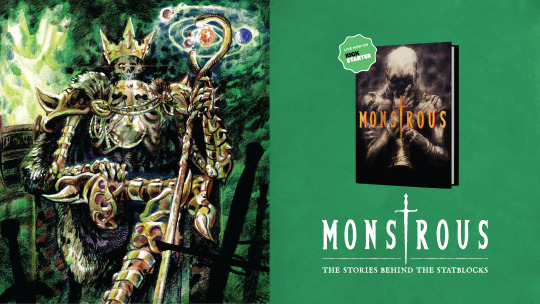
Create custom monsters that uniquely fit your world with MONSTROUS! MONSTROUS focuses on narrative impact and is compatible with any fantasy roleplaying game.



If this is interesting to you, def check out our Kickstarter page. There are a lot of cool updates showcasing how to use this book and the design process behind it! We also have a lot of free ttrpg supplements on our itch.io page! Thanks for your time and attention!
-Amber
#ttrpg art#ttrpg#ttrpg community#indie ttrpg#ttrpg monsters#system neutral#system agnostic#dnd#dungeons & dragons#role playing games#monsters#lich#dnd art#dnd5e#dungeons and dragons#skeleton#skull#dragon#angels#celestial#d&d#books#kickstarter#d&d 5e#monster books#tabletop rpg#tabletop#tabletop roleplaying#rpg#monster book
1K notes
·
View notes